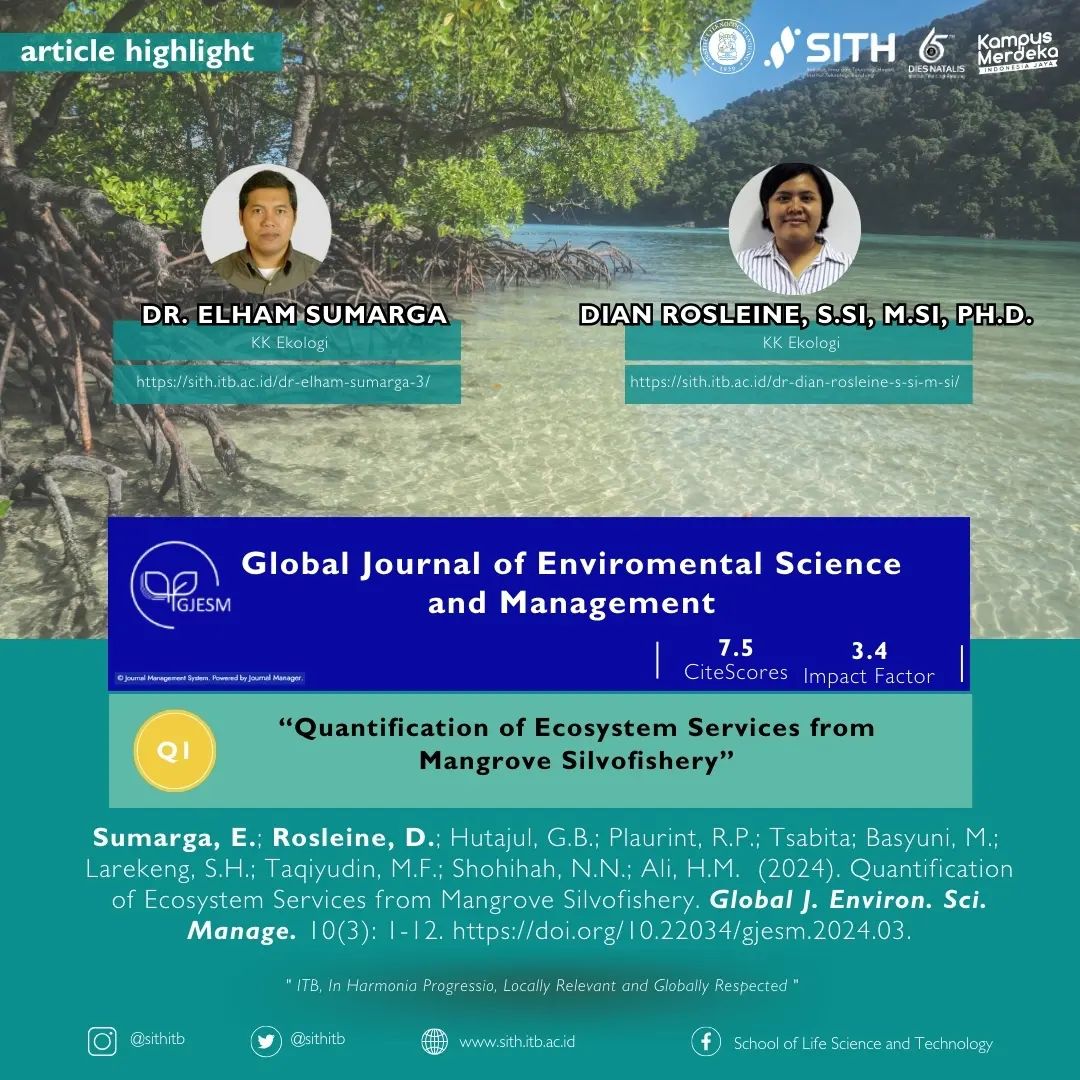Quantification of Ecosystem Services from Mangrove Silvofishery

The aim of this study by Dr. Elham Sumarga, Dian Rosleine, S.Si., M.Si., Ph.D., and their colleagues was to assess the four primary services rendered by the Blanakan mangrove silvofishery area in Subang District, West Java: carbon sequestration, fisheries productivity, naturebased tourism, and bird sanctuary. The study revealed the high capacity of the mangrove stands at the study location for carbon storage, with an estimated 137.9 tonnes carbon per hectare aboveground and 79 tonnes carbon per hectare belowground. Local communities actively engage in silvofishery practices within the Blanakan mangroves, cultivating fish and shrimp, with an average annual income of around 1,513 United States dollar per hectare. The natural beauty of the Blanakan mangrove area attracts tourists with its diverse ecosystem and opportunities to see crocodile breeding facilities. Visitor numbers vary, averaging around 128 people per month until mid-2023. The Blanakan mangroves are home to a total of 23 bird species, contributing to a species diversity index of 2.1. Two species with significant conservation value were found: the critically endangered Alcedo euryzona and the vulnerable Halcyon pileata.
Article Citation:
Sumarga, E.; Rosleine, D.; Hutajul, G.B.; Plaurint, R.P.; Tsabita; Basyuni, M.; Larekeng, S.H.; Taqiyudin, M.F.; Shohihah, N.N.; Ali, H.M. (2024). Quantification of Ecosystem Services from Mangrove Silvofishery. Global J. Environ. Sci. Manage. 10(3): 1-12. https://doi.org/10.22034/gjesm.2024.03.

